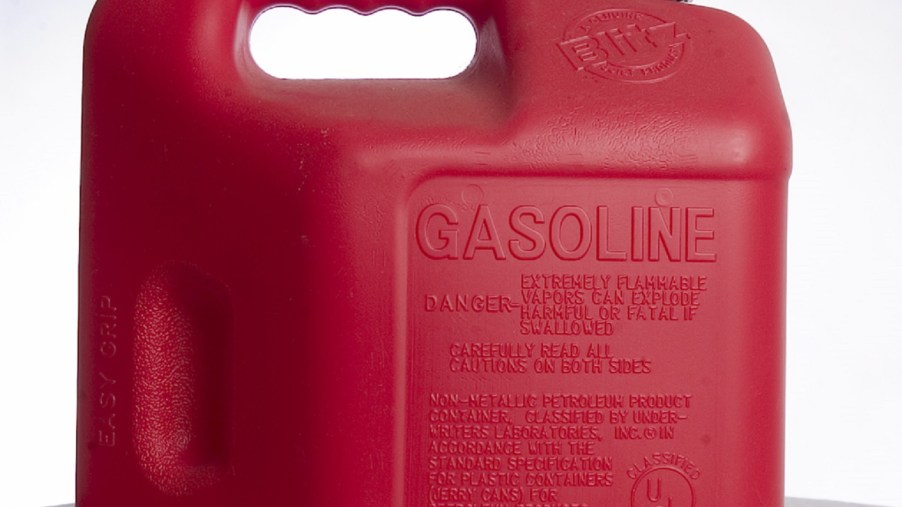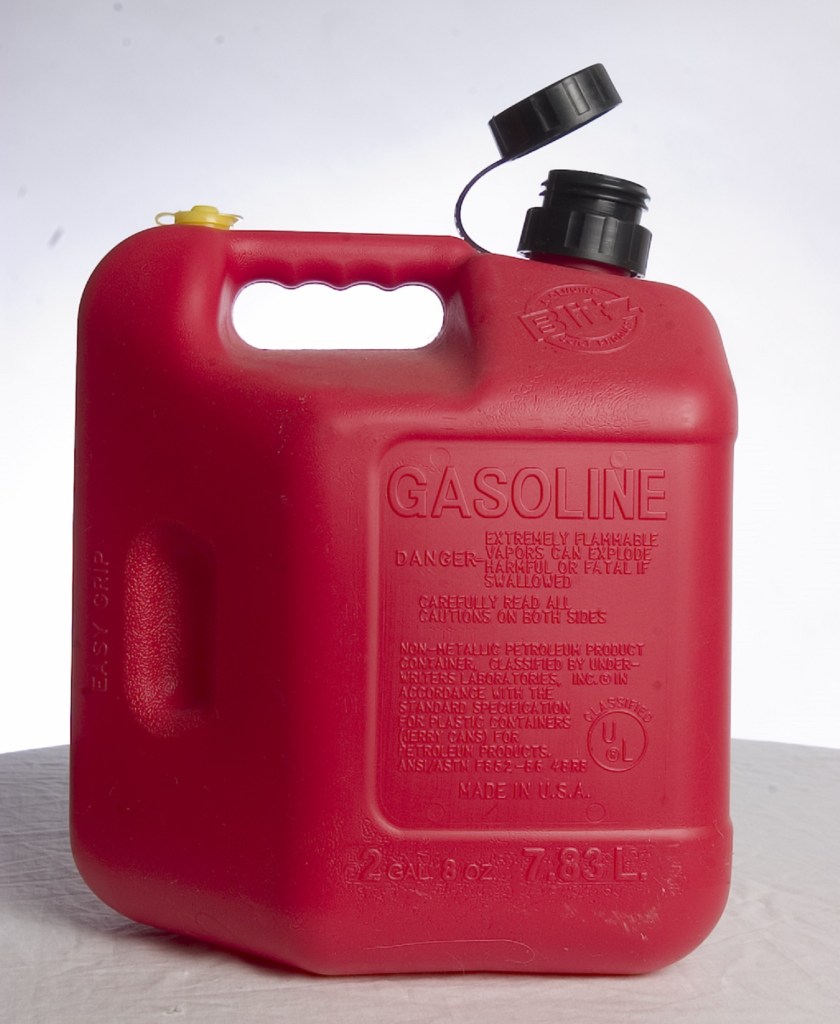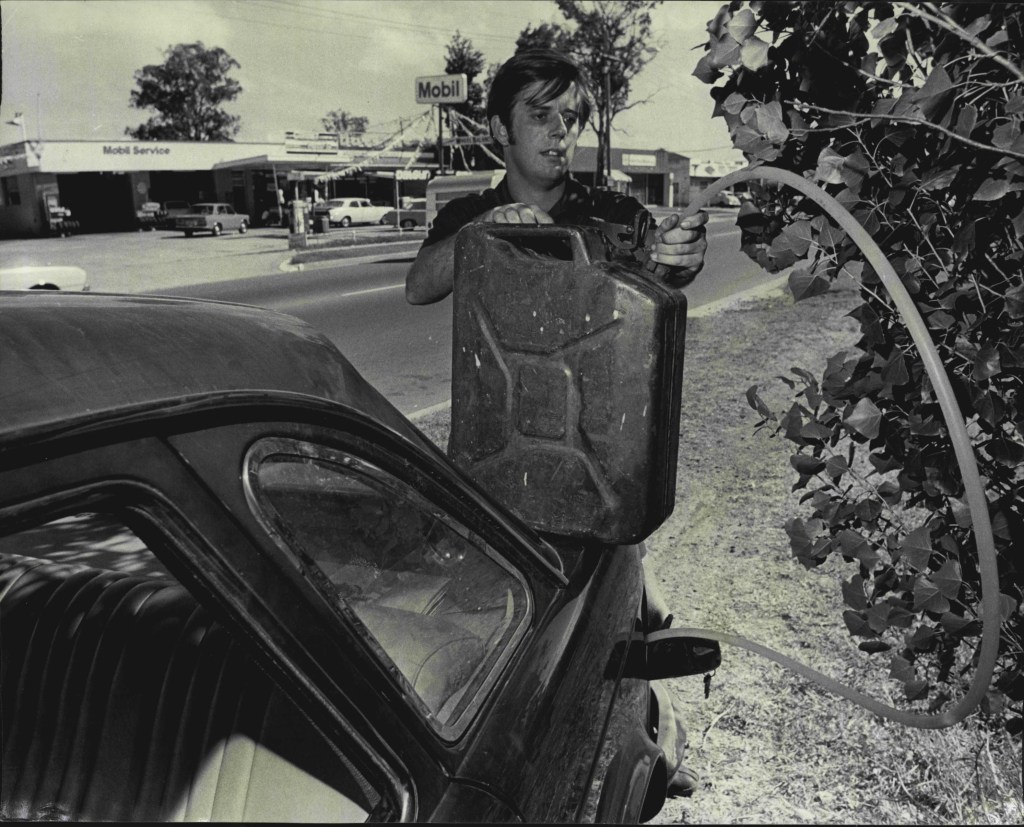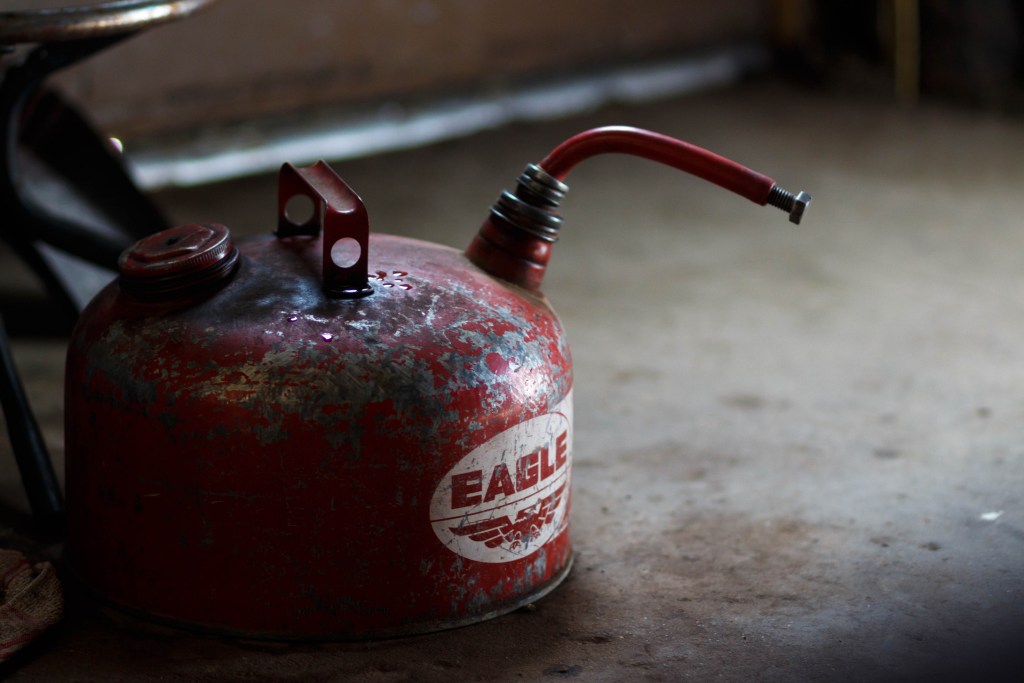
What’s the Best Gas Can for Emergencies?
Gas can guide article highlights:
- The term ‘jerry can’ is often used outside of the US to refer to a gas can, while a safety can is a specific kind of high-safety fuel container
- All gasoline containers are painted red and are made from metal or plastic with a varying amount of built-in safety features
- Regardless of which gas can you buy, make sure to fill and store it correctly, regularly wash it out, and for long-term storage, add some fuel stabilizer
Whether you’re powering a mower, gearing up for an off-road adventure, or just want to be prepared, gas cans are useful accessories to keep around. And an emergency gasoline supply in the face of ever-climbing gas prices isn’t the worst idea in the world. Still, you can’t store gasoline in any old container (and definitely not plastic bags). You need a good gas can—and here’s what to look for when you shop for one.
Gas can vs. jerry can vs. safety can: what’s the difference?

A plastic Type I gas can | Ben Hasty/MediaNews Group/Reading Eagle via Getty Images 
A man refills his gas tank via a jerry can | Stevens/Fairfax Media via Getty Images
To the average person, gas cans, or ‘portable fuel containers (PFCs)’ look basically the same. Some are metal, others plastic, and some have more than one opening. But there’s more to it than meets the eye.
Firstly, while the generic American term for a PFC is ‘gas can,’ overseas, you’re far more likely to hear ‘jerry can’ or ‘jerrican.’ It’s a WWII term that originally referred to the style of PFC developed in Nazi Germany. The original jerry can was made of welded steel lined with plastic and featured a snap-close opening, built-in handles, and stamped ridges. That made it strong and stackable; plus, you could carry water in it instead of gasoline. It was also easy to carry, floatable, leakproof, and didn’t spill gas everywhere.
At the time, most Allied PFCs were fairly flimsy and/or difficult to use. The German (‘jerry’) ones, though? They were so good that the Allies straight up stole them off battlefields and copied the design. As a result, at least in the US, the term ‘jerry can’ mainly describes a gas can style—upright, rectangular, ridged sides—today. However, you can still buy a modern version of the NATO jerry can.
Another term you might see is ‘safety can.’ But unlike ‘jerry can,’ this isn’t a stylistic term, at least not according to the Occupational Safety and Health Administration (OSHA). While gas cans must meet certain safety criteria, which we’ll cover shortly, safety cans go several steps further.
Colors and safety features to look for
Because gasoline and its vapors are flammable and explosive, gas cans aren’t regular containers. Or rather, they can’t be regular containers. The EPA and DOT set minimum safety requirements to ensure PFCs are airtight, sturdy, and don’t expose the gasoline to static electricity. Usually, Underwriters Laboratories (UL) or Factory Mutual (FM) tests manufacturer claims and puts its stamp on passing containers. So, if you’re gas can shopping, look for EPA approval and/or a UL seal, The Drive says.
To gain UL and EPA approval, gas cans often come with one or more safety features. That means things like safety nozzles, fume vents, child-proof caps, and flame-arresting devices, Roadshow explains. Also, color.
Yes, like coolant and antifreeze, gas can color matters. Red PFCs are designed specifically for gasoline, while yellow ones hold diesel and blue ones contain kerosene, The Drive reports. And no, you shouldn’t put gasoline in a yellow container.
Now, if you’re storing gasoline for personal use, a UL-approved gas can should be sufficient. But if you run a commercial business and/or use a commercial vehicle, OSHA requires safety can usage. At a minimum, safety cans have flame arresters, spring-loaded caps, spout covers, and ways of relieving pressure in case of heat exposure. Also, to limit explosion and fire risk, they can’t carry more than five gallons. And DOT-approved safety cans go even further; they have locking lids and drop-protection-rated handles.
However, there is something else safety cans and other PFCs share, and that’s type terminology. A Type I gas can has one opening, which means you need a funnel to use it, The Drive explains. Meanwhile, Type II cans have two openings, one for filling and one for dispensing. Many of them also have flexible hoses to make pouring even easier.
Is a metal gas can better than a plastic one?
Although designations and safety features are important, gas can shopping starts with a more basic question. No, not ‘how big?’ but ‘what material?’ Specifically, metal or plastic.
At first glance, metal seems like the obvious choice. It has higher impact resistance and is overall more durable than plastic. And metal gas cans tend to hold more fuel, The Drive reports. But metal PFCs also weigh and cost more than plastic ones, and they’re bulkier. Plus, they can rust.
In addition, plastic containers aren’t weak. Keep in mind, there are plastic safety cans on the market, and they’re just as leakproof as the metal ones. However, plastic has a lower melting point than steel. Also, plastic PFCs can absorb stored chemicals over time, making them weaker. So, they have shorter shelf lives.
Even the best containers can’t keep gas good forever

Speaking of shelf life, it’s the reason why hoarding gasoline is a bad idea. Even inside an approved, leakproof gas can, ethanol-free gasoline only lasts for six months, tops. It doesn’t matter if the can is metal or plastic, eventually, all gasoline goes bad.
So, if you’re storing gasoline for an extended period, always mix in a fuel stabilizer. The stabilizer won’t make old gasoline like-new again, and it can’t indefinitely extend the shelf life. But it will prevent oxidation and other degradation for more than six months.
Also, if your gas has gone bad, don’t try to burn it away in a lawnmower or dump it down a drain. Leave it in a sealed container and contact your local recycling/toxic waste disposal facility, The Drive says. The facility employees will then instruct you about how to deliver it so they can safely dispose of it.
Which gas can should you get?
Picking between gas cans ultimately depends on several factors:
- Volume
- Desired safety features
- Material
- Budget
- Intended use
For someone who just wants to keep a bit of gasoline in their shed, The Drive and Roadshow recommend the Garage Boss Press ‘N Pour. It’s a plastic can with a child-proof cap and flame-mitigation device and only costs $15 in one-gallon form. And a five-gallon version only costs $25.
If you want something safer and tougher, Eagle makes a wide array of Type I and Type II galvanized-steel safety cans. At $56, the one-gallon Type I with flame-arrester and funnel is significantly pricier than the Garage Boss one. But a five-gallon version is only $9 more; the Type IIs are about $50 more than that. However, all Eagle cans are made in the US.
For the overlanding and off-roading crowd, Roadshow recommends the RotopaX FuelpaX. These plastic fuel containers are leakproof and modular, so you can easily add more to your rig. Plus, you can mount them on your motorcycle. The containers range from $72-$100, depending on capacity, while the mounting brackets range from $30-$100.
Finally, if you want a genuine steel jerry can, Wavian is the only manufacturer. These containers are EPA and CARB approved, built to DOT standards, and in sub-five-gallon form, are OSHA compliant. A 1.3-gallon one for gasoline costs $75, while a 5.3-gallon one is $85.
Don’t just get a good can: know how to safely fill and store it
Buying a quality gas can and, if necessary, some fuel stabilizer is a great way to store gasoline. But those are merely the first steps.
Once you buy your container, you must safely fill it. That means taking it out of your vehicle, putting it on the ground, and touching some metal to get rid of static electricity. Furthermore, make sure the pump nozzle always touches the container, so no static electricity builds up. This is all to lower the risk of fire.
Once you get the full gas cans home, don’t put them in your home. PFCs shouldn’t be stored in your house or your vehicle. Instead, put them in a well-ventilated garage or shed that’s unconnected to your house. If that’s not possible, find a sturdy, ventilated cabinet that’s preferably fireproof and doesn’t contain hazardous chemicals.
Finally, clean your PFCs every so often. Put a few drops of dish soap/detergent inside, partially fill it with warm water, and vigorously shake it, The Drive says. Then, rinse it out and let it dry.
Do this, and whether you get a jerry can, safety can, or something else, your PFC will last through many emergencies.
Follow more updates from MotorBiscuit on our Facebook page.


